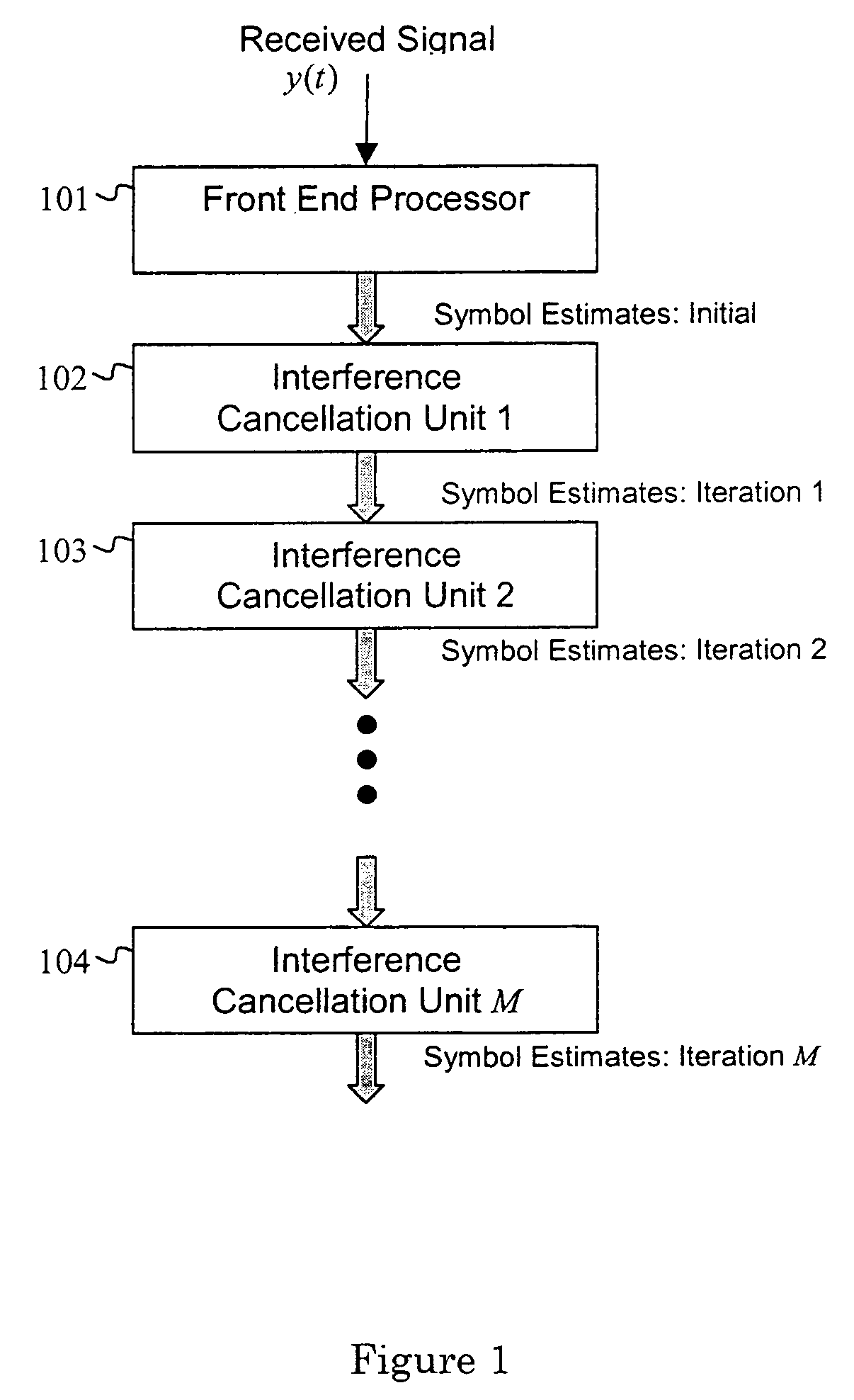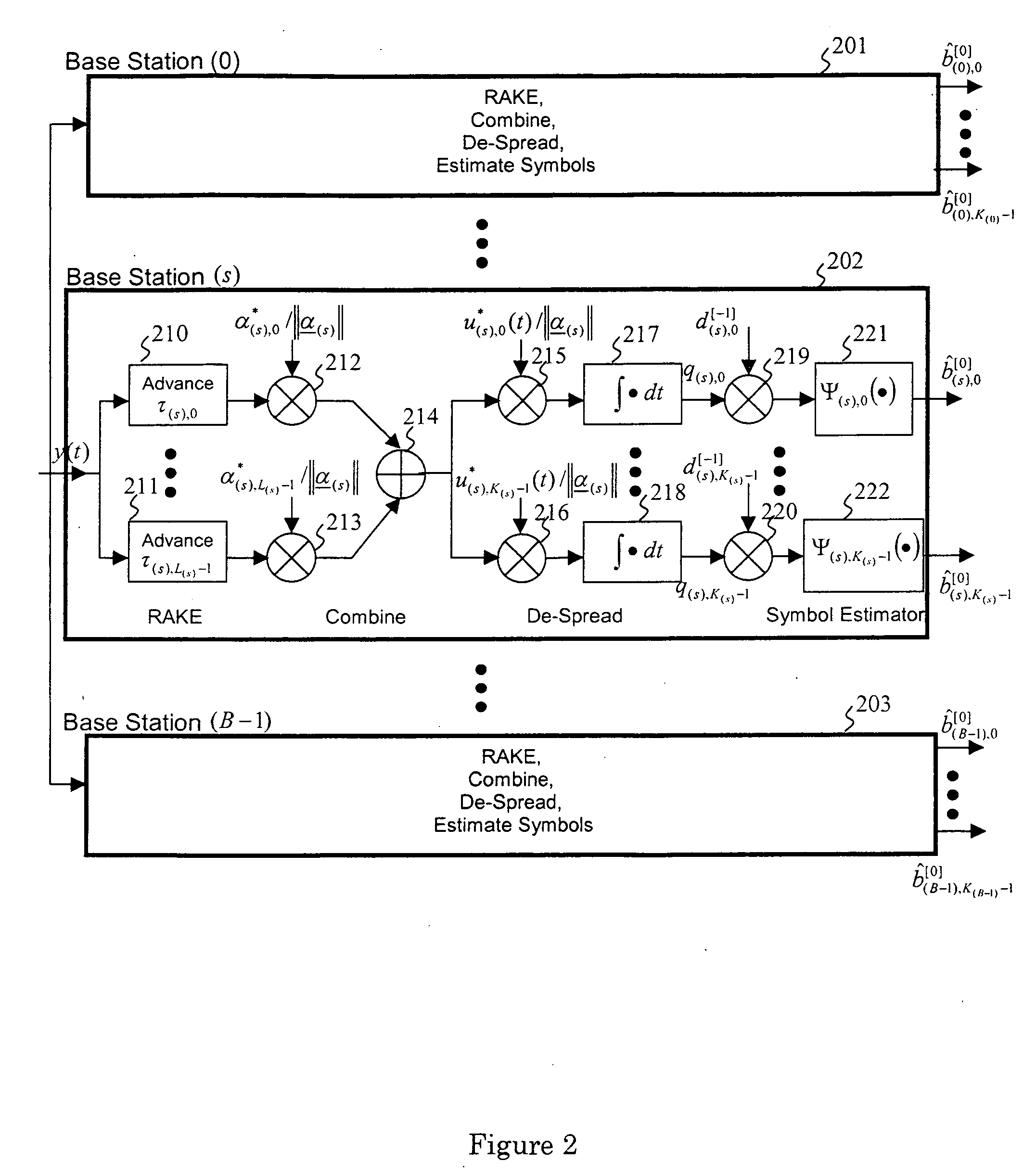Iterative interference cancellation using mixed feedback weights and stabilizing step sizes
- Summary
- Abstract
- Description
- Claims
- Application Information
AI Technical Summary
Benefits of technology
Problems solved by technology
Method used
Image
Examples
Embodiment Construction
[0046] The present invention will now be described more fully hereinafter with reference to the accompanying drawings, in which preferred embodiments of the invention are shown. This invention may, however, be embodied in many different forms and should not be construed as limited to the embodiments set forth herein. Rather, these embodiments are provided so that this disclosure will be thorough and complete, and will fully convey the scope of the invention to those skilled in the art.
[0047] First the invention will be described as it applies to a forward-link channel, and then extended to include reverse-link channels. The following formula represents an analog baseband signal received at a mobile from multiple base stations, each with its own multipath channel, y(t)=∑s=0B-1∑l=0L(s)α(s),l∑k=0K(s)-1b(s),k u(s),k(t-τ(s),l)+w(t),t∈(0,T),Equation 1
with the following definitions [0048] (0, T) is the symbol interval; [0049] B is the number of modeled base stations and is i...
PUM
 Login to View More
Login to View More Abstract
Description
Claims
Application Information
 Login to View More
Login to View More - R&D
- Intellectual Property
- Life Sciences
- Materials
- Tech Scout
- Unparalleled Data Quality
- Higher Quality Content
- 60% Fewer Hallucinations
Browse by: Latest US Patents, China's latest patents, Technical Efficacy Thesaurus, Application Domain, Technology Topic, Popular Technical Reports.
© 2025 PatSnap. All rights reserved.Legal|Privacy policy|Modern Slavery Act Transparency Statement|Sitemap|About US| Contact US: help@patsnap.com



